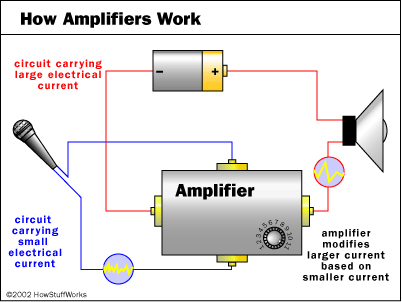Syllabus: GS3/Science and Technology
Context
- The amplifier remains a transformative invention for being able to receive the human voice and boost it so thousands of people can hear it at once.
Working of Amplifier
- Invention: Lee De Forest (1906) is often credited with inventing the Audion tube, also known as the triode vacuum tube, which was the first electronic amplifier.
- Microphone: A microphone converts sound into electrical signals. It works as a transducer, changing sound energy into electrical energy.
- Sound Amplification: After capturing the audio signal, a preamplifier boosts the voltage, adding energy while minimizing noise.
- Impedance matching ensures the signal stays clear. A transistor amplifies the voltage, increasing the strength of the signal.
- Amplifying Voltage: A transistor amplifies the voltage by allowing electrons to flow between parts of the transistor, which creates a stronger current.
- This amplified signal is then sent to the speaker.

Types of Amplification
- Power Amplification: Different amplifier classes (A, B, AB, C, D) are used depending on the application.
- Class A and B amplifiers are used in basic sound systems and small studios. Home theatres and more intensive use cases prefer Class AB amplifiers.
- Antennae emitting radio-frequency signals at a single carrier frequency use Class C amplifiers whereas public announcement systems use Class D amplifiers.
Producing Loud Sound
- The loudness of the sound depends on the power of the input signal.
- The speaker’s voice coil, placed within a magnet, vibrates when current flows through it, moving the diaphragm to create sound.
- Higher power input leads to louder sound, and adjusting components like the magnet strength and diaphragm size can enhance the sound for different frequencies.
Source: TH
Previous article
India’s Nuclear Energy Roadmap: Union Budget 2025-26
Next article
Retreating Himalayan Glaciers